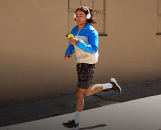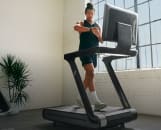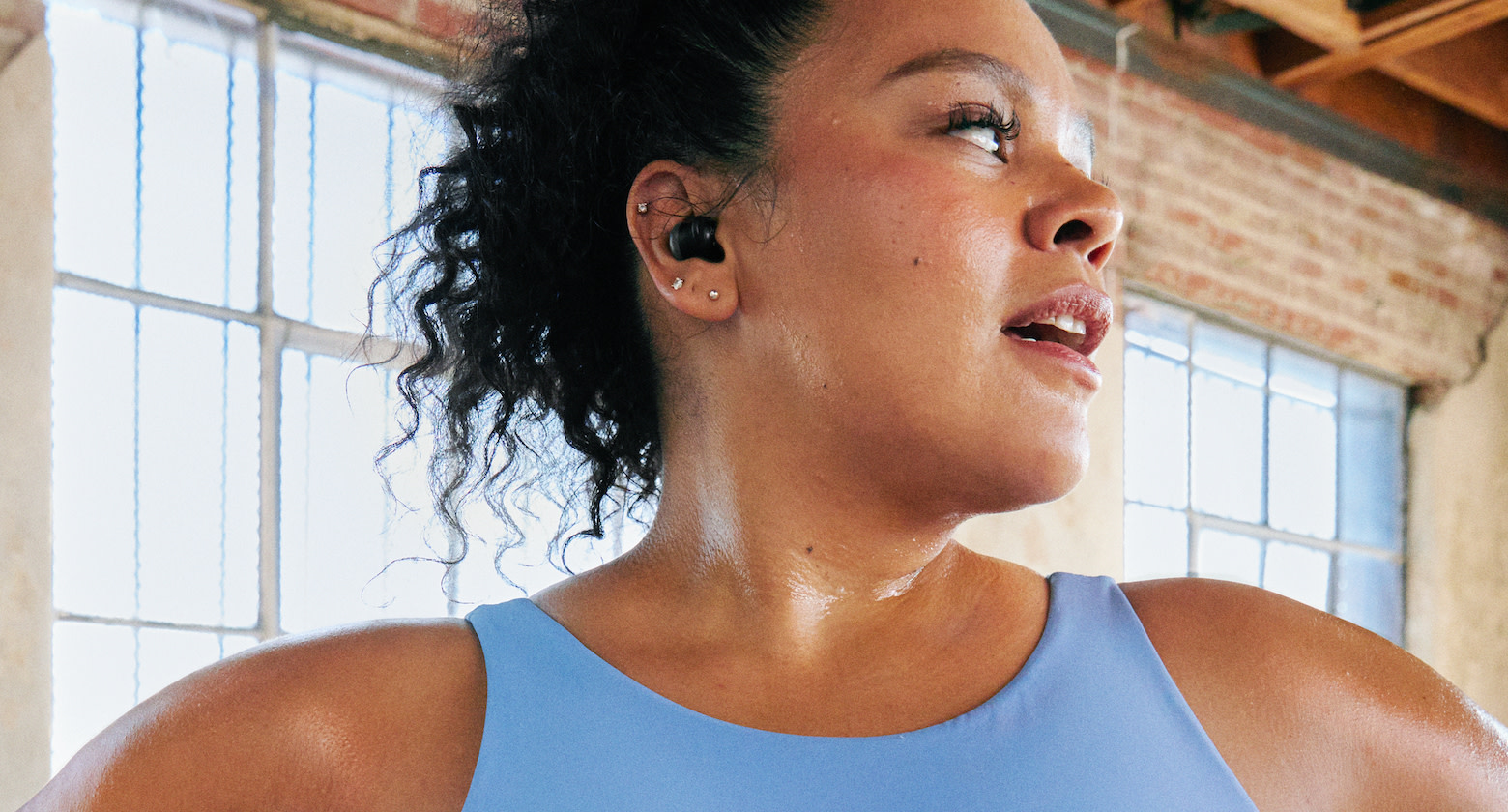
gbh007 / iStock / Getty Images Plus via Getty Images
7 Reasons Why Walking After Eating Is So Beneficial
The dishes can wait. This simple post-meal movement gives your body and mind a boost in just a few minutes.
By Karla Walsh, Kathleen Felton•
7 Benefits of Walking After Eating
Are There Any Potential Drawbacks of Walking After Eating?
When and How Fast Should Your Post-Meal Walk Be?
How Long Should You Walk After Eating?
Is Walking the Best Way to Get Active After Eating?
More Tips for Walking After Eating
The Takeaway
Whether you’re hustling to a post-lunch meeting or can’t wait to watch your favorite show after dinner, it can be tempting to hurry to your next task right after a meal. But research suggests that it can be remarkably beneficial to carve out just a little time for a new hobby: walking after eating.
Going for a walk after a meal can deliver several major health benefits, says Libbat-Tzion Shaham, MD, a board-certified family physician with Medical Offices of Manhattan. Even a few minutes of movement—whether that’s an indoor or outdoor walk or another activity you love—can boost your mental and physical health after chowing down. Read on to learn more about when, why, and for how long to walk after eating to step up your overall wellbeing.
7 Benefits of Walking After Eating
The health benefits of walking are real, no matter what time of day you lace up. But a mounting body of scientific evidence hints that you might accrue even more benefits by timing some of those steps wisely.
Here’s why a little walking after eating can take you a long way.
1. Helps Balance Blood Sugar
After we eat, the foods we digest are converted to glucose, a source of energy for our body, explains Mary Stewart, RD, a registered dietitian and the founder of Cultivate Nutrition. If we stay fairly sedentary after eating, this glucose is stored in the liver and muscles as glycogen to be used for energy later on.
But when we move our body by walking, cycling, dancing, stretching, or otherwise, “we are activating our muscles which use that glucose for energy, which reduces the post-meal blood sugar spike,” Stewart explains. Since our muscles are asking our bodies for fuel (in the form of glucose) to power that post-meal movement, less of it stays in our blood. As a result, walking after eating not only helps keep our blood sugar in check, but can even help lower it, says board-certified sports dietitian Roxana Ehsani, RD.
Research shows that physical activity right after a meal, starting at a mere two to five minutes of walking, can have a beneficial impact on post-meal hyperglycemia (elevated blood glucose). No time or space to walk or sneak in a workout? Even standing up rather than sitting or lying down after a meal is enough to engage muscles and make the blood sugar hurdle more of a speed bump, science suggests.
This is helpful for everyone, as blood sugar spikes—and subsequent crashes—not only mess with energy levels, but may also increase the risk for type 2 diabetes later in life if high blood sugar levels are so common they become chronic.
Speaking of diabetes, individuals with one form of the condition, type 2, will especially benefit from the more even-keeled blood sugar that can occur as a result of walking after eating. That’s because people with diabetes have a target range in which they aim to keep their blood sugar, and going too low or high may have a noticeable impact on normal body systems. If severe and long-term enough, blood sugar outside of a person with type 2’s suggested range may lead to kidney, eye, or nerve damage.
“Being active can help those with type 2 diabetes better manage their blood sugar,” Ehsani adds. “They can think of exercise as ‘free medication’ to maintain their blood sugar.” (Just remember that while lifestyle changes like this can be hugely helpful, they shouldn’t be viewed as a replacement for necessary medications. You should always work with a medical professional to help manage diabetes and any other conditions.)
Level up Your Post-Meal Walks with Peloton
See all classes2. Promotes Smoother Digestion
Have you ever finished a meal and felt bloated or overly full? This is a common sensation, especially if you tend to eat or drink at a fairly fast pace.
Besides slowing down and opting for portion sizes that better agree with your stomach and intestines, “taking a walk after eating has been shown to stimulate digestion,” Stewart says. (Science backs this up.)
Walking after eating for 10–15 minutes has been shown to help adults who frequently experience bloating feel markedly less so after eating. What’s more, a post-meal stroll can help reduce forms of gastrointestinal (GI) distress, like gas.
3. Eases Constipation
And speaking of digestion: Another benefit to walking after eating is that it can boost gastrointestinal movement, which can help if you’ve been a little, er, blocked up.
“Unlike vigorous exercise, which can turn off digestion signals, walking can enable more beneficial movement in the stomach and intestines,” explains Dr. Shaham, “so it’s good for constipation.”
Research backs this up, and a number of studies have suggested that walking can both speed up your digestive system and make stool easier to pass. In a 2019 systematic review, for example, researchers found that walking and physical activity in general had “significant benefits” to relieve constipation symptoms. Drinking enough fluids and making sure that pre-walk meal you had included plenty of fiber can help too.
4. Increases Circulation
In addition to kickstarting the digestive process, walking after eating also helps improve circulation, according to William W. Li, MD, an internal medicine physician and author of Eat to Beat Disease: The New Science of How Your Body Can Heal Itself. This means that more blood is pumped to our muscles and brain—another reason why you might feel even more invigorated by walking after eating rather than working (or snoozing, scrolling, or sitting) after a meal.
“Walking helps to mobilize stem cells into the bloodstream too,” Dr. Li adds. “These stem cells assist in healing and regenerating organs that need to be repaired.”
5. Boosts Mood
According to a 2022 review published in the journal JAMA Psychiatry, adults meeting the physical activity recommendation of 2.5 hours per week saw improved mental health, including a 25 percent lower risk of depression compared to those who did no physical activity.
“Being active post-meal—or really any time of the day—can be a mood booster,” Ehsani says. “Physical activity can boost your circulating levels of ‘feel good’ hormones, including endorphins and dopamine.”
Dr. Li adds that walking also helps make your brain more sensitive to the neurotransmitter serotonin. With serotonin at normal levels, you will likely feel calmer, happier, and more even-keeled, and might find it easier to focus as well.
6. Supports a Healthy Heart
“Walking and movement benefit the heart,” Dr. Shaham says. Research consistently supports this: Regular walking has been shown to reduce a person’s risk of heart disease and stroke. Plus, it helps manage weight, cholesterol, and blood pressure.
Every little bit helps, but in a 2020 study, researchers noted that cardiovascular disease and mortality risk among men decreased most when participants walked at a faster pace. A 2023 meta-analysis also suggests that the more frequently you walk, the lower the risk of death from cardiovascular disease or any cause. Not to mention, a 2009 meta-analysis showed that walking for approximately 30 minutes a day, five days a week, was associated with a 19 percent reduction in coronary heart disease.
7. It’s an Easy Way to Fit In More Movement
Finally, one of the most compelling reasons to head out for a walk after eating is that this can be one of the simplest ways to squeeze in a little extra movement—or possibly any movement at all!—into your day. This is particularly helpful if you’re someone who works at a desk and spends most of the day sitting down, Dr. Shaham says.
“Extending a meal break by walking, such as 10 minutes up to 30 minutes, can help break up the day,” she says. “It opens up an opportunity to insert movement and self-care into the work day, especially for people who work remotely or who drive for work.”

Adam Crowley / Tetra Images via Getty Images
Are There Any Potential Drawbacks of Walking After Eating?
For most people, there are few reasons not to walk after eating. As long as you feel good after your meal and don’t have any underlying health conditions, feel free to walk away, experts say.
That said, if you plan to pick up the pace or try something more like run-walk intervals, it’s best to wait at least 30 minutes after eating before moving. “[This will] “give yourself a bit more time to digest, or else it might feel slightly uncomfortable,” Ehsani says.
When and How Fast Should Your Post-Meal Walk Be?
Walking immediately or soon after a meal is ideal, Dr. Li says, as “it will help ‘burn down’ glucose in the bloodstream to avoid high glucose spikes, which can cause elevated insulin spikes and metabolic stress on the body.”
Some research suggests that a 30-minute brisk walk that starts 15 minutes after a meal can improve the glycemic response in young, healthy adults.
“If you’re just going for a walk at a normal level, meaning not too vigorous of a pace, you can hop up right after you are finished eating if you’d like,” Ehsani says.
How Long Should You Walk After Eating?
“Any amount of movement post-meal will offer benefits ranging from blood sugar management, boosting mood, and supporting digestion,” Stewart says.
Remember, even standing after a meal (rather than sitting) moves the needle. But starting at two minutes of walking, you’ll likely begin to accrue measurable blood sugar benefits by a post-meal stroll.
“If that’s all the time you have, you can just do 120 seconds, or if you prefer to go longer you can,” Ehsani says. “If you haven’t been active yet that day, going for a walk post-meal can be the perfect time to hit your exercise aim for the day. The goal is at least 150 minutes of moderate aerobic activity a week, or about 30 minutes five days a week.”
That said, don’t stress too much about the exact length of your post-meal walk. There’s no “magic number” for how long or how fast to walk after eating for maximal benefits, Dr. Li says, since each individual is different, and age and mobility can make a difference.
“If you are new to intentional activity after a meal, start slow and build over time,” Stewart advises. “This will help you dial in the right combination of effort and duration to reap the health benefits without the potential digestive pitfalls.”
On the other hand, if you prefer a distinct benchmark, you could work up to walking for 30 minutes after your largest meal of the day. Or spread out that half-hour across two or more of your meals. (For instance, you could stroll 15 minutes after both lunch and dinner, or for 10 minutes after each of your three meals.)
Is Walking the Best Way to Get Active After Eating?
The best modes of exercise, post-meal or any time, “are ones you will stick with and actually enjoy,” Stewart says. After eating, “the key is to choose something that gets your heart rate up slightly, but not too aggressively that could cause digestive issues from too much movement.”
Any low- to moderate-intensity movements, such as walking, dancing, cycling, swimming, or doing chores around the house are all excellent options, Dr. Li and Stewart agree.
“If you decide to engage in other activities that are more vigorous, such as a jog, run, [or] game of basketball or soccer post-meal, just remember that it may be best to wait a half-hour or more so you’ve begun digesting your meal more before engaging in these higher-intensity activities,” Ehsani says.
More Tips for Walking After Eating
To get the most out of your walking after eating routine, keep these pro tips in mind:
Walk like you mean it. Rather than just going through the motions and moving your legs, “walk purposefully, swinging your arms to get extra exercise out of the activity,” Dr. Li recommends.
Don’t forget your breath. Take deep breaths by inhaling through your nose, filling your lungs fully, and exhaling in a regular, controlled way, Dr. Li advises. “Breathing is part of the exercise,” he adds.
Find a buddy. “The biggest barrier I hear from clients as to why they don’t move their body after a meal is lack of motivation,” Stewart says. “Inviting a friend or family member can be a great way to help hold yourself accountable to meeting your post-meal movement goals.”
Free your mind. It can feel tempting to catch up on your friends’ social posts or scroll through emails, but try to unplug. “Calm your mind while walking,” Dr. Li says. If you can, “walk without distractions and pay attention to the scenery around you. Being part of your environment will help with mental calmness.”
Or, follow expert guidance. If you prefer to have a pro guiding you through your stroll, try one of the post-meal walks or walking meditations on the Peloton App to level up your steps.

Peloton App
Access thousands of classes with no equipment needed.
The Takeaway
Walking after eating is a simple way to support your mental and physical health. Studies back up the benefits of a post-meal stroll, including a brighter mood, smoother digestion, steadier blood sugar, and increased circulation (which can boost energy as well as mental clarity).
No time to walk? Even standing will score you some of the same benefits. However, if you have time for even a two-minute walk (and ideally a stroll that’s at least 30 minutes), you’ll have a better chance of feeling the difference of walking after eating—inside your brain and throughout your body.
This content is for informational and educational purposes only and does not constitute individualized advice. It is not intended to replace professional medical evaluation, diagnosis, or treatment. Seek the advice of your physician for questions you may have regarding your health or a medical condition. If you are having a medical emergency, call your physician or 911 immediately.
Get our latest health stories straight to your inbox
Enter your email to get articles, expert-backed tips, and updates from Peloton sent to your inbox.
By providing your email address, you agree to receive marketing communications from Peloton.
For more about how we use your information, see our Privacy Policy.









